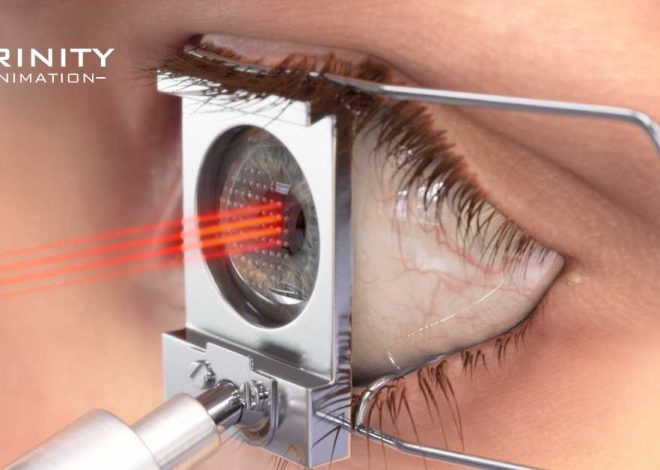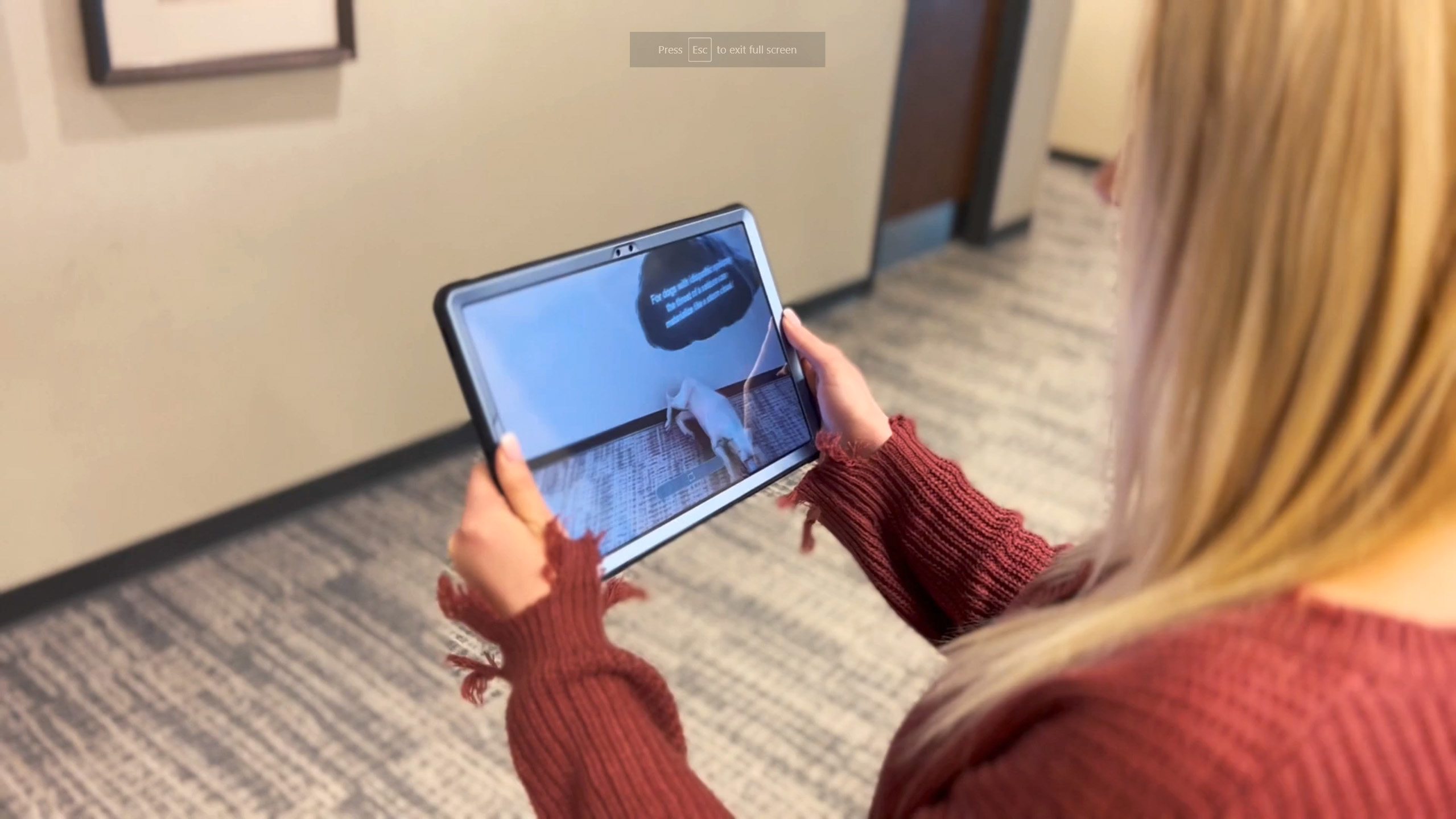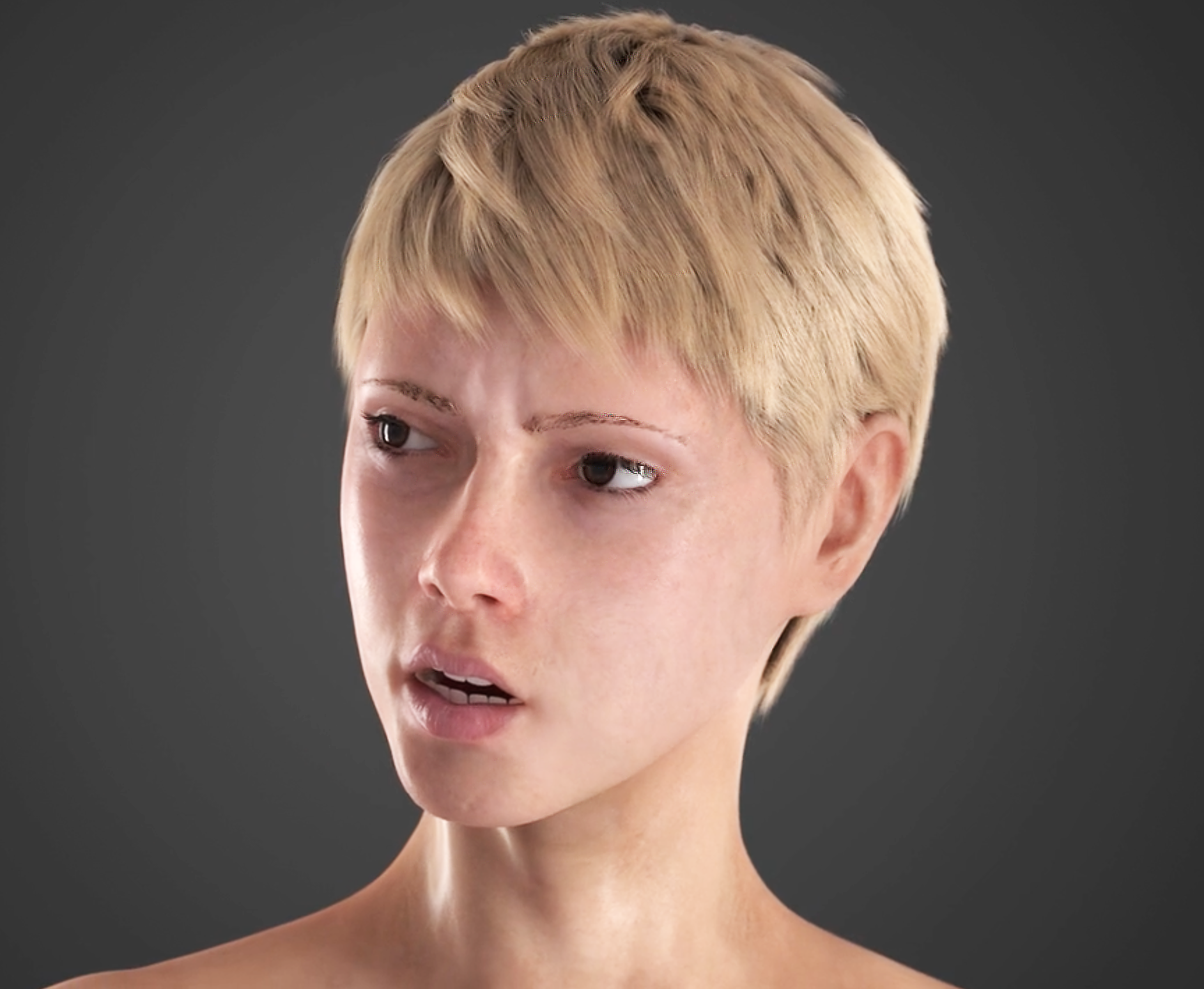
Facial Animation Demonstration
In this facial animation, Trinity’s artists prove their ability to create amazingly lifelike human faces. Realistic facial animation comes with challenges: first, creating a movement (rigging) system that reproduces the movement of the human head as it frowns, smiles and speaks, as well as creating life-like human skin with its subtle color, texture and elastic qualities.
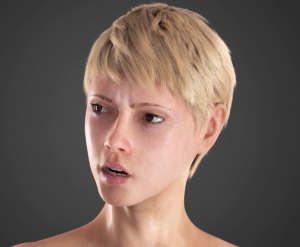
Trinity’s artists start with a collection of curved lines called a “mesh” which creates the overall form of the human head. Here the mesh is expertly sculpted to mimic the brow, eyes, nose, lips and chin of a young woman. The more complex a feature, the denser the concentration of lines needed to represent it in animation 3D space. Therefore you will see a higher concentration of mesh lines around the lips and mouth. All components of the head must be created and arranged in such a manner to allow independent, but many times coordinated movement. The components in this animation include shoulders, neck, whole head, jaw, forehead, eyebrows, cheeks, lips and jaw.
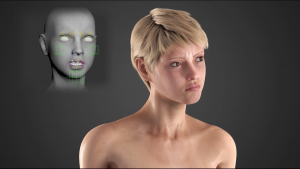
Each of these components possesses the capacity to move independently. In real life, these components move together in varying degrees of displacement. Human skin may stretch more in one part of the face than in another in the same expression (smile, frown, and quizzical look) the artist’s task is to control the movement of all components at the same time in a way that accurately mimics real human speech and facial expressions. Given that a small shift in the manner in which a person holds his eyebrows can completely change the overall expression of the face, this is a difficult task which requires expert level knowledge of animation software and techniques.
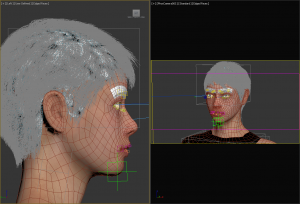
Trinity’s artists paid close attention to details of the skin texture such as wrinkles and skin folds that appear during certain movements. For example, wrinkles appear between the eyebrows when they furrow or around the eyes and mouth during certain expressions. When Trinity animators manipulate the facial muscles they are indicated where the tension is by colors that appear on the face; red signifies high tension where wrinkling will occur. To accomplish accurate facial expressions, animators researched and closely observed actual human facial expressions which provided them with the small details create the life-like result.
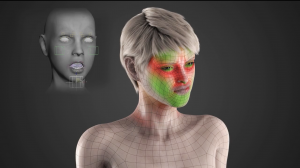
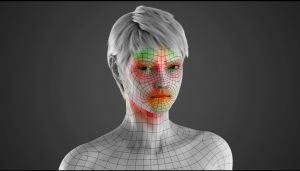
Trinity’s artists are masters of state-of-the-art animation software built on the principles of the physics of light. Trinity’s artists draw on the subtle art of using “subsurface scattering” to reproduce varying levels of natural translucency. Translucency is the tendency of a material to allow or not allow light rays to shine through from one side of an object to another. The most common fully translucent material is clear glass, such as that which is used in windows. Without the use of the subsurface scattering technique, the surface of objects in an animation would look like solid, smooth plastic, as opposed to soft, flexible, living human skin. Subsurface scattering is a technique which realistically reproduces the behavior of light rays as they are emitted from the light source, hit the surface of an object (fruit, skin, wax, etc.) and continue on beneath the surface deflecting and scattering inside the object. Some light rays are absorbed; some are deflected, and some travel through and exit the opposite side of entry. Human skin has approximately the translucency of wax, which means that some light penetrates the surface and scatters around beneath the surface reacting to any changes in the density of the human face.
In the final product, the combination of realistic facial features and subtle but accurate facial animation create the ultimate realism of this figure. The meticulous head turns paired with precisely timed shoulder shrugs convey an accurate representation of human body language, and the exquisite detail of wrinkles and skin folds transform this model into a more believable depiction of a human figure with lifelike facial expression. Trinity animators successfully accomplished the goal of developing a system that provides a faster and more accurate process for facial animation. This skill opens up possibilities for clients and projects that Trinity Animation can apply it to such as medical animations.
Where will realism in Computer Graphics lead? Here’s what people are talking about…
Will CGI Actors Replace Humans?
Is it the beginning of the end for live actors?
Do we really have to say goodbye forever to our movie greats? Maybe not!!

